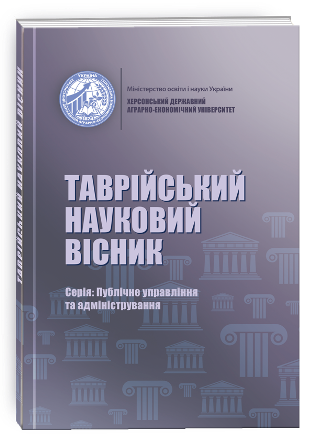THE SEPARATION OF POWERS IN THE WORKS OF JOHN ADAMS AND THE CONSTITUTION OF FRANCE: COMPARATIVE ANALYSIS
DOI:
https://doi.org/10.32851/tnv-pub.2021.3.21Keywords:
separation of powers, checks and balances, state, government, rule of lawAbstract
John Adams is one of the main contributors to the structure of the US government. He focuses on a model of a republic and, on the contrary to other philosophers, provides specificities according to his vision. The Constitution of France has the same reasoning at its core. As far as it aims to establish democracy in a country with monarchic tradition, more attention is devoted to the establishment of institutions and mechanisms of checks and balances, in comparison to states with democratic tradition. Both works are similar in what they planned to achieve; therefore, Adams can become a great source of knowledge for the system of public administration in France. The article discusses main ideas of John Adams related to the separation of powers and the system of checks and balances and looks for corresponding articles in the Constitution of France to identify similarities and differences in both models. The first part of the article describes Adams’ reasoning why a republic is an ideal form of government and necessity for the separation of powers. Later, it moves to the detailed analysis of each branch of authority separately and its connections to others. After the elucidation of Adams’ ideas, there is a comparison section with the Constitution of France for better visualization of both models. In the end, the author provides the reasoning for differences and explication how potential issues are avoided. The article demonstrates that there are differences between the models; nevertheless, one cannot regard them as a shortcoming because they provide alternative ways of how to keep the equilibrium between branches of authority. From the analysis follows that the Constitution of France is more elaborated than the works of John Adams. Consequently, even though all aspects of Adams’ vision of the mechanism of checks and balances are implemented in France, the author tries to focus on how they build a unified system and what are the potential gaps in it.
References
Williamson, H.P. (1968) John Adams, Counsellor of Courage. American Bar Association Journal. No. 54 (2), pp. 148–151.
Adams, J., Wythe, G. (1776) Thoughts on government: Applicable to the present state of the American colonies. In a letter from a gentleman to his friend. Philadelphia : Printed by John Dunlap.
Allen, B. (2002) John Adams: Realist of the Revolution. The Hudson Review. No. 55 (1), pp. 45–54. DOI: 10.2307/3852843.
Trees, A. (2001) John Adams and the Problem of Virtue. Journal of the Early Republic. No. 21 (3), pp. 393–412. DOI: 10.2307/3125267.
France (1958) The French Constitution, adopted by the referendum of September 28, 1958 and promulgated on October 4, 1958. French text and English translation. New York : French Embassy, Press and Information Division.
McGlone, R.E. (1998) Deciphering Memory: John Adams and the Authorship of the Declaration of Independence. The Journal of American History. No. 85 (2), pp. 411–438. DOI: 10.2307/2567746.
Saleilles, R. (1895) The Development of the Present Constitution of France. The Annals of the American Academy of Political and Social Science. No. 6, pp. 1–78.
Faux, R.A. (1906) France. Journal of the Society of Comparative Legislation. No. 7 (2), pp. 407–414.
Mayville, L. (2015) Fear of the Few: John Adams and the Power Elite. Polity. No. 47 (1), pp. 5–32.
Miroff, B. (1987) John Adams’ Classical Conception of the Executive. Presidential Studies Quarterly. No. 17 (2), pp. 365–382.







